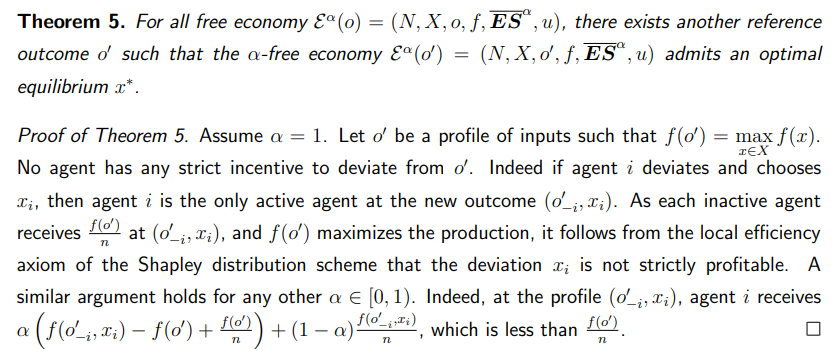The Role of Reference Points in Achieving Equilibrium Efficiency in Fair and Socially Just Economies
Table of Links
Abstract and 1. Introduction
-
A free and fair economy: definition, existence and uniqueness
2.1 A free economy
2.2 A free and fair economy
-
Equilibrium existence in a free and fair economy
3.1 A free and fair economy as a strategic form game
3.2 Existence of an equilibrium
-
Equilibrium efficiency in a free and fair economy
-
A free economy with social justice and inclusion
5.1 Equilibrium existence and efficiency in a free economy with social justice
5.2 Choosing a reference point to achieve equilibrium efficiency
-
Some applications
6.1 Teamwork: surplus distribution in a firm
6.2 Contagion and self-enforcing lockdown in a networked economy
6.3 Bias in academic publishing
6.4 Exchange economies
-
Contributions to the closely related literature
-
Conclusion and References
Appendix
5.2 Choosing a reference point to achieve equilibrium efficiency

\ 
\ Remark that this result holds for any value of α, including for α = 1, which corresponds to a situation where the tax rate is zero. In that case, the entire surplus of the economy is distributed following the Shapley value. The analysis implies that if an economy can choose its reference point, it can always do so to lead to equilibrium efficiency.
\
:::info Authors:
(1) Ghislain H. Demeze-Jouatsa, Center for Mathematical Economics, University of Bielefeld (demeze jouatsa@uni-bielefeld.de);
(2) Roland Pongou, Department of Economics, University of Ottawa (rpongou@uottawa.ca);
(3) Jean-Baptiste Tondji, Department of Economics and Finance, The University of Texas Rio Grande Valley (jeanbaptiste.tondji@utrgv.edu).
:::
:::info This paper is available on arxiv under CC BY 4.0 DEED license.
:::
\
You May Also Like

Google's AP2 protocol has been released. Does encrypted AI still have a chance?

What Congress Has Left to Do This Year

Bitcoin volatility surge may signal return to options-driven prices: Analyst
The rising volatility suggests a potential return to levels seen before the launch of BTC exchange-traded funds, which dampened volatility. Bitcoin’s (BTC) price volatility has surged over the last two months, signaling a potential return to options-driven price action that sparks large market moves in both directions.Bitcoin’s implied volatility never broke past 80% after Bitcoin ETFs were approved in the United States, according to Jeff Park, a market analyst and advisor at investment firm Bitwise. However, a chart shared by Park shows that Bitcoin’s volatility is creeping back up to about 60 at the time of this writing.Read more